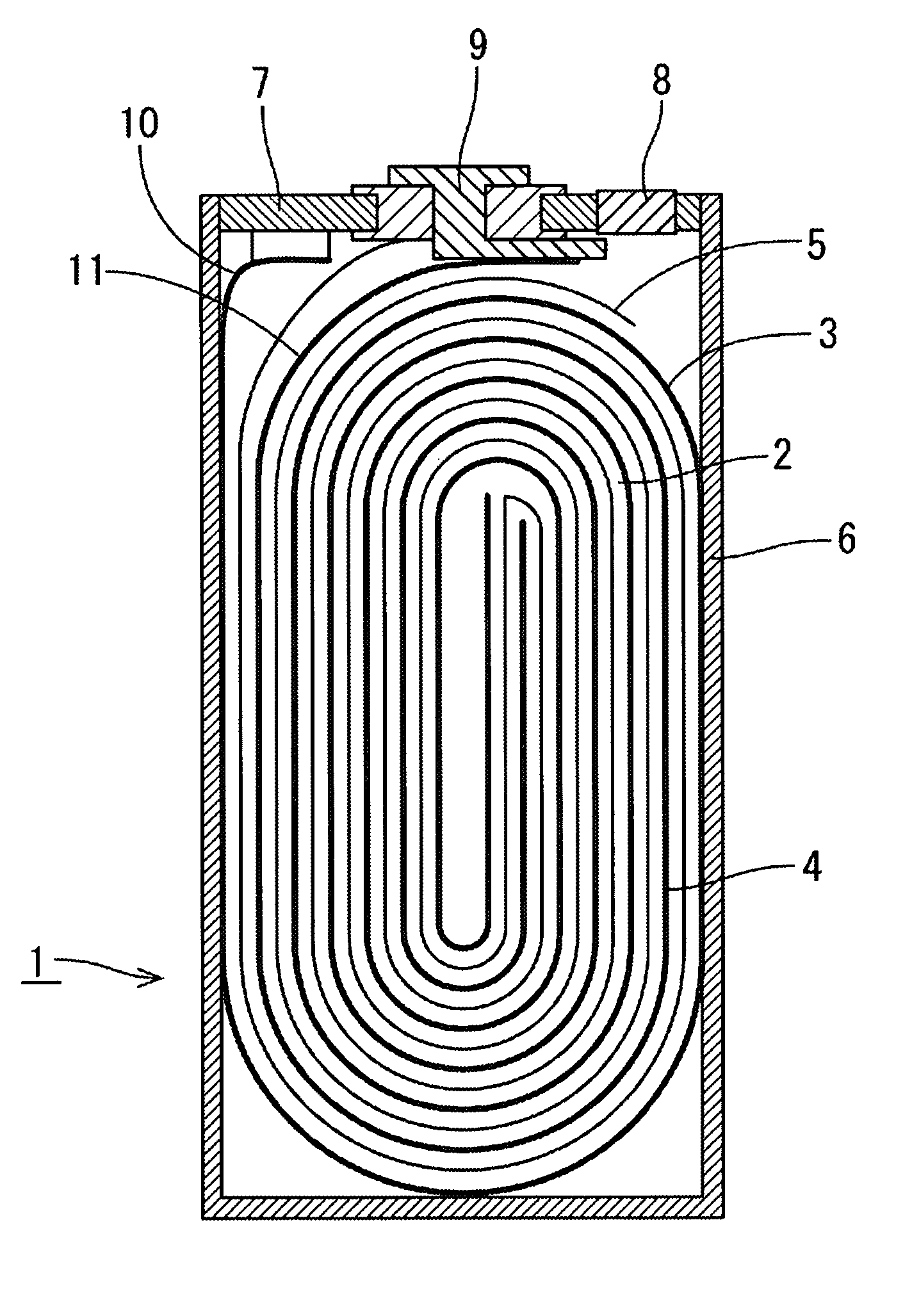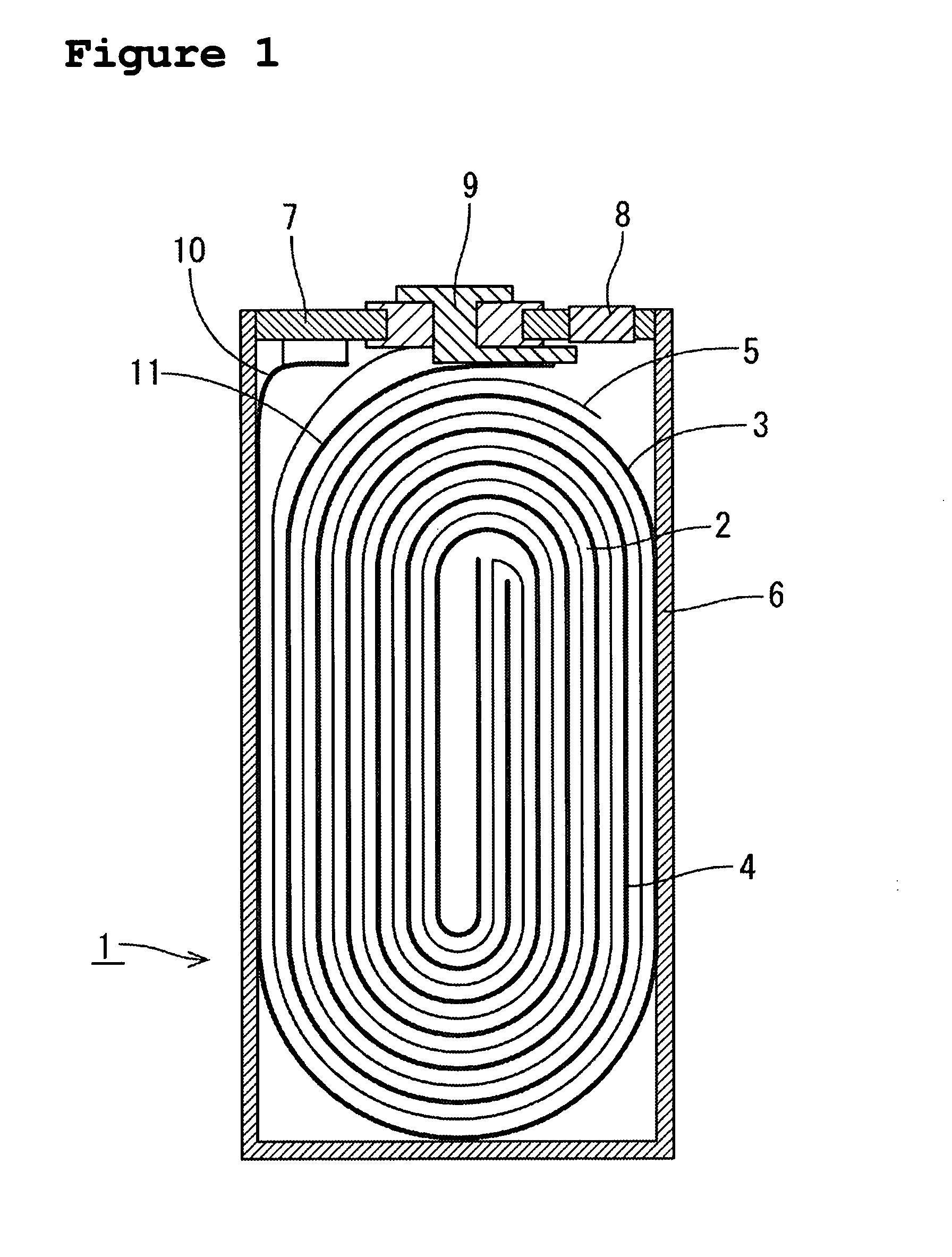Non-aqueous electrolyte secondary cell
a secondary battery and electrolyte technology, applied in the direction of non-aqueous electrolyte accumulator electrodes, cell components, electrical equipment, etc., can solve the problems of excessive high crystalline quality, which can be subject to phase transition, and achieve excellent heat resistance, improve battery safety, and reduce capacity
- Summary
- Abstract
- Description
- Claims
- Application Information
AI Technical Summary
Benefits of technology
Problems solved by technology
Method used
Image
Examples
example 1
1. Synthesis of Lithium-containing Composite Oxide
1) Synthesis of LiNi0.82CO0.15Al0.03O2
[0032] Nickel-cobalt coprecipitation hydroxide was prepared by dissolving nickel sulfate and cobalt sulfate at a given composition and then adding sodium hydroxide solution to this solution. Next, aluminum hydroxide was added to the solution thus prepared so that the ratio of the number of nickel, cobalt, and aluminum atoms, respectively, would be Ni:Co:Al=82:15:3. Subsequently, lithium hydroxide was added so that the ratio (Lit / Mt) of the number of lithium atoms (Lit) to the total number of the metal atoms other than lithium (Mt) would be 1.01. (The reason that the amount of Li is larger is that the amount of Li will be slightly reduced during burning process.)
[0033] After burned at 600° C. for 5 hours, this precursor was grinded and then burned at 750° C. for 10 hours under oxygen atmosphere; thus, the lithium-containing composite oxide represented by LiNi0.82Co0.15Al0.03O2 was obtained.
2...
example 2
[0042] According to the preparation procedures identical to those of Example 1, except that the second burning temperature was 700° C., LiNi0.82Co0.15Al0.03O2 was obtained.
[0043] With the use of LiNi0.82Co0.15Al0.03O2, a battery was manufactured in the same manner as described in Example 1, and a similar test was conducted.
example 3
[0044] According to the preparation procedures identical to those of Example 1, except that manganese dioxide was added instead of aluminum hydroxide to nickel-cobalt coprecipitation hydroxide, LiNi0.80Co0.15Mn0.50O2 was obtained.
[0045] With the use of LiNi0.80Co0.15Mn0.05O2, a battery was manufactured in the same manner as described in Example 1, and a similar test was conducted.
PUM
 Login to View More
Login to View More Abstract
Description
Claims
Application Information
 Login to View More
Login to View More - R&D Engineer
- R&D Manager
- IP Professional
- Industry Leading Data Capabilities
- Powerful AI technology
- Patent DNA Extraction
Browse by: Latest US Patents, China's latest patents, Technical Efficacy Thesaurus, Application Domain, Technology Topic, Popular Technical Reports.
© 2024 PatSnap. All rights reserved.Legal|Privacy policy|Modern Slavery Act Transparency Statement|Sitemap|About US| Contact US: help@patsnap.com










